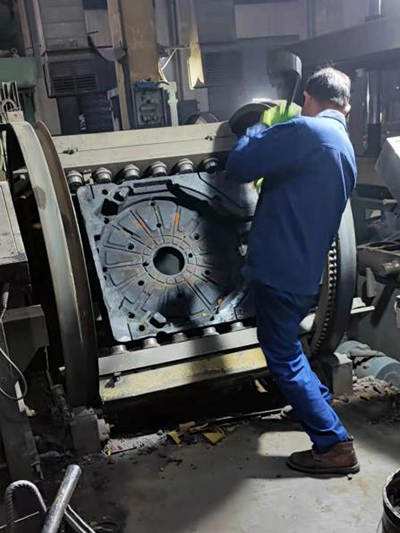 **Molding Sands** The type and quality of sand used affect the mold's stability and reproducibility **Molding Sands** The type and quality of sand used affect the mold's stability and reproducibility
**Molding Sands** The type and quality of sand used affect the mold's stability and reproducibility **Molding Sands** The type and quality of sand used affect the mold's stability and reproducibility sand casting tolerances. Finer sands generally yield better surface finishes and tighter tolerances but may be more prone to cracking.
3. **Core Making** Complex parts often require cores to create internal cavities. Core alignment and stability are critical for maintaining accurate dimensions and can be a source of tolerance deviations.
4. **Metal Shrinkage** As metal cools and solidifies, it undergoes shrinkage. Accurately predicting and compensating for this shrinkage during the design phase is essential to achieve desired tolerances.
5. **Process Variables** Molding pressure, pouring temperature, cooling rate, and venting efficiency all influence the casting's dimensional stability and, therefore, tolerances.
**Enhancing Tolerance Control**
To minimize tolerance deviations and improve part quality, foundries employ several strategies
- **Advanced Patternmaking Techniques** Using computer-aided design (CAD) and 3D printing for pattern creation enhances precision and consistency.
- **Process Control** Implementing strict process controls, including temperature monitoring and precise timing, ensures consistent casting conditions.
- **Riser and Chiller Design** Strategically placing risers (feeding heads) and chillers helps control cooling rates, reducing shrinkage-related distortions.
- **Casting Simulation Software** Pre-production simulations can predict potential defects and optimize the casting process to reduce tolerance issues.
- **Post-Casting Operations** Machining and grinding can be used to remove excess material and refine dimensions to meet tighter tolerances, albeit at an added cost.
In conclusion, managing tolerances in sand casting is a multifaceted task that requires a deep understanding of the casting process, materials, and design considerations. By embracing advanced technologies, rigorous process control, and a meticulous approach to design, foundries can significantly enhance the dimensional accuracy of sand-cast components, thereby contributing to the overall efficiency and reliability of the end-products they serve. Achieving optimal tolerances not only bolsters product quality but also strengthens the competitive edge in today's demanding manufacturing landscape.
Post time:Jun . 25, 2024 02:07
sand casting tolerances. Finer sands generally yield better surface finishes and tighter tolerances but may be more prone to cracking.
3. **Core Making** Complex parts often require cores to create internal cavities. Core alignment and stability are critical for maintaining accurate dimensions and can be a source of tolerance deviations.
4. **Metal Shrinkage** As metal cools and solidifies, it undergoes shrinkage. Accurately predicting and compensating for this shrinkage during the design phase is essential to achieve desired tolerances.
5. **Process Variables** Molding pressure, pouring temperature, cooling rate, and venting efficiency all influence the casting's dimensional stability and, therefore, tolerances.
**Enhancing Tolerance Control**
To minimize tolerance deviations and improve part quality, foundries employ several strategies
- **Advanced Patternmaking Techniques** Using computer-aided design (CAD) and 3D printing for pattern creation enhances precision and consistency.
- **Process Control** Implementing strict process controls, including temperature monitoring and precise timing, ensures consistent casting conditions.
- **Riser and Chiller Design** Strategically placing risers (feeding heads) and chillers helps control cooling rates, reducing shrinkage-related distortions.
- **Casting Simulation Software** Pre-production simulations can predict potential defects and optimize the casting process to reduce tolerance issues.
- **Post-Casting Operations** Machining and grinding can be used to remove excess material and refine dimensions to meet tighter tolerances, albeit at an added cost.
In conclusion, managing tolerances in sand casting is a multifaceted task that requires a deep understanding of the casting process, materials, and design considerations. By embracing advanced technologies, rigorous process control, and a meticulous approach to design, foundries can significantly enhance the dimensional accuracy of sand-cast components, thereby contributing to the overall efficiency and reliability of the end-products they serve. Achieving optimal tolerances not only bolsters product quality but also strengthens the competitive edge in today's demanding manufacturing landscape.
Post time:Jun . 25, 2024 02:07
Next:Lost Foam Casting Process Sand Mold Metal Formation Technique
